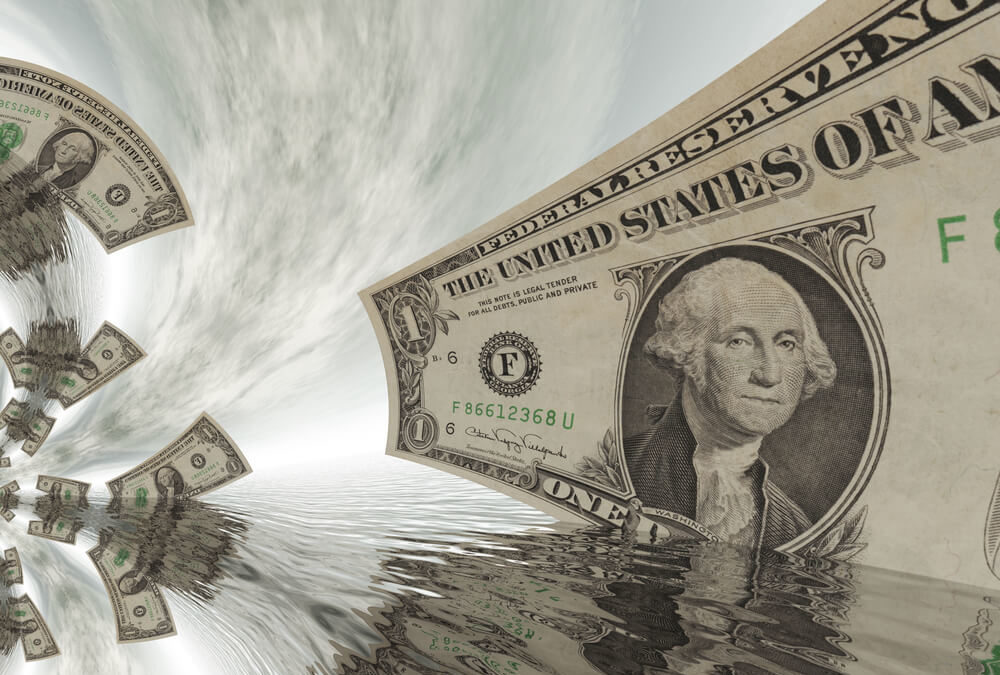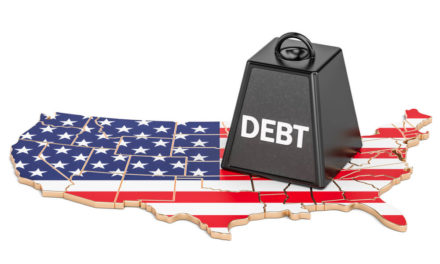The final reckoning for the global debt crisis is now near.
The crisis has never truly ended. It was merely swept under the rug with massive money printing by central banks. And now we’re counting down the days to a whole new set of debt disasters.
Strangely, though, it’s been so many years since the crisis set off the first fireworks in 2008, many people have completely forgotten how profoundly it impacts their lives. Some aren’t even aware that it exists.
So it’s time for a quick refresher course …
Lesson No. 1: The debts are now much bigger
The most debt any government should have is about 50 cents of every dollar that the country produces in a year — 50 percent of GDP. But Washington has piled up $22 trillion in debts, or an astounding 103 percent of GDP.
Lesson No. 2: Hidden debts are even more massive
The debts on Uncle Sam’s books are small in comparison to the hidden debts few people talk about — the government’s unfunded obligations for Medicare, Social Security and veterans’ benefits.
They’re at least $105 trillion.
If every American taxpayer had to pay an equal share of these debts and obligations, their bill would be $918,294.
Lesson No. 3: The debts are everywhere
The federal government has a lot of company.
According to the Fed’s latest release, state and local governments have piled up $3 trillion in debt.
American households have amassed $10.3 trillion in mortgages, plus another in $4 trillion in credit cards.
American businesses have bloated their balance sheets with $15.2 trillion in debt.
Total private-sector debts in the U.S. (excluding financial institutions): $32.5 trillion.
Lesson No. 4: The debts are global
In the UK, government debts are 80 percent of GDP; in France, 99 percent; in Italy, an over-the-top 142 percent; in Greece, a shocking 180 percent.
Including all countries, total government and private debts are estimated at $250 trillion.
What about governmental obligations for health care, retirement pensions, and welfare around the world?
Throw those in, and the all-in global debt load could be close to $1,000,000,000,000,000, or $1 quadrillion.
Lesson No. 4: Most people don’t care
The U.S. budget deficit is ballooning right past the $1 trillion mark, but in Congress, neither the Dems nor the GOP seem to give a damn. They’re too busy throwing bricks at each other.
In Europe, it’s even worse. Most fiscal conservatives — who used to complain bitterly even when deficits were far smaller — have retired or died. Now, conservatives rarely talk about the massive debt loads. They’re too busy fighting immigration and leaving the European Union.
Lesson No. 5: Almost no one expects a debt crisis
That’s how it always happens. In fact, if it were widely expected, it wouldn’t be nearly as bad.
Like the Y2K computer bug. Government agencies were so sure there would be massive computer failures at the turn of the millennium, programmers labored 24/7 to make sure it could not happen. And it didn’t. It was non-event.
Debt crises are different. They’re black swan events. They strike out of the blue. When the collective consciousness is clouded by complacency. When most people ignore the most blatant warning signs:
Italy is already in the first phase of collapse. Its economy is in recession; its biggest banks on the brink of failure; its leaders doing none of the things they must do to head off a downward spiral of debt and depression.
In fact, they’re doing precisely the opposite:
Deputy Prime Minister Matteo Salvini has attacked the central bank, threatening to have the leadership fired.
Just a few days ago, he even said the government would seize the country’s gold reserves. He wants to sell them to fund even more government spending.

Matteo Salvini and other leaders in Rome not only want to leave the E.U., they’re also ready to fire their central bankers and default on the country’s debts. Since Italy has the most debts of any country in Europe, it could send the entire continent into a financial death spiral.
Bond investors see the handwriting on the wall. So, they’re dumping their holdings. That drives Italy’s interest costs still higher, prompts even more selling, and creates a vicious cycle that can sink even the strongest of governments.
Last week, I also told you about the red-light warning signs flashing in Turkey, Greece and among Europe’s largest banks.
But the biggest warning sign of all is the failure of the world’s largest central banks to save the day.
In the U.S., the Fed’s No. 3 in command, John Williams, talks about trying below-zero interest rates. The stock market, which used to crave those words, takes a nosedive.
In Europe, where official rates are already below zero, Central Bank President Mario Draghi now promises to keep them there, while printing still more paper money (quantitative easing). Markets tumble.

ECB President Mario Draghi is so desperate to prevent a European debt collapse, he’s decided to abandon any effort to raise official rates back up to zero. But it’s useless. Europe is sinking anyhow.
The money-printing schemes aren’t working any more. The debts are too big. The European economy is sinking regardless of what central banks do.
This is the endgame. Instead of quantitative easing (QE), we now have quantitative failure (QF) — an extremely dangerous state of affairs when the global economy sinks despite desperate efforts by central bankers to perpetuate the biggest money printing of all time.
This failure is serious. It will change everything about how we live, work, save and invest — not just this year, but for many years to come.
When exactly will it explode anew into the headlines?
Where will it hit first?
How exactly will it unfold?
The chief analyst and research director of the Edelson Institute just called me with the answers.
He blew me away. But fortunately, I recorded the call. So, if you want to hear it right now, click here.
Good luck and God bless!
Martin




